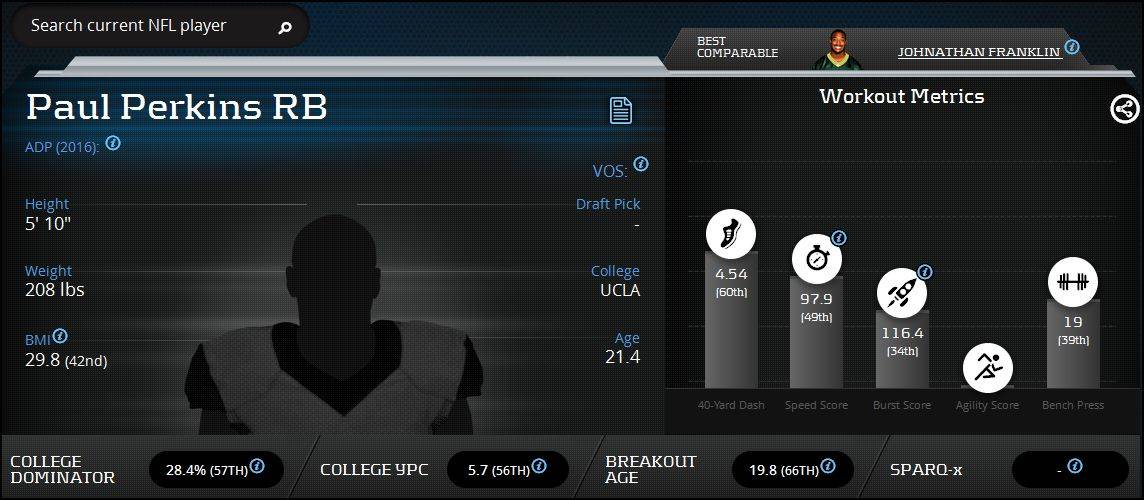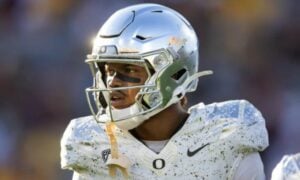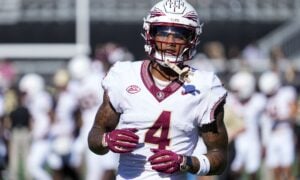Rookie Profile – Paul Perkins, RB UCLA
Draft season is flying by, and the draft will be here before we know it. Information and data has been flying around the internet through various web sites and Twitter about the current draft prospects. While many draft analysts are puffing out their chests and promoting their bold opinions about their favorite players, quality draft prospects are falling off the landscape; being overshadowed on social media by analysts trying to outdo one another for the hottest 140 characters on Twitter. Studious draft enthusiasts can capitalize on this trend by being knowledgeable of the entire draft class. Rebuilding dynasty teams can turn the ship around by hitting on a mid-late round rookie pick every year. This is the time where we must go against the masses, put our nose in the books and evaluate the entire group of prospects to gain an advantage over our league-mates.
I spend way too much of my time on Twitter reading the recent news and opinions about the current draft class when I should be doing other things that are more productive. That being said, there are a lot of players not getting the love that they deserve and Paul Perkins, running back from UCLA is one of them. Analyzing from a macro viewpoint, he checks the boxes with his athletic ability, college production and on film. He’s a player that is currently slipping through the cracks and with proper evaluation we can determine where we want to target him in rookie drafts.
[am4show have=’g1;’ guest_error=’sub_message’ user_error=’sub_message’ ]
Perkins was a three-star recruit from Chandler High School which is located around 20 minutes south of east of Tempe Arizona. He was named first team all-state as a senior, where he rushed for 1,297 yards and 20 touchdowns and also caught 11 passes for 105 yards and one touchdown. Not only was he a highly regarded running back, but he was also one of the top safeties in the nation. He played football in the fall and was a track star in the spring, setting school records and placing second in the state during his senior in the 300m hurdles. During the recruiting process, Rivals.com had him ranked as the 40th running back prospect in the nation. He was heavily recruited by Air Force, Colorado and Arizona before signing his letter of intent with the UCLA Bruins.
Perkins broke out during his sophomore season, rushing for 1,572 yards and nine touchdowns, and became the first UCLA Bruin to lead the PAC-12 in rushing since DeShaun Foster in 2001. He also finished the season ranked fifteenth in the NCAA in rushing. He surpassed the 100-yard mark six times during his sophomore year. He continued his success during his junior season as he rushed for 1,343 yards and 14 touchdowns. He had five games where he rushed for over 100-yards, including a game where he rushed for 219 yards against BYU. He finished the season ranked fourth in the PAC-12 in rushing. Perkins finished his career as the all-time leading receiver at running back catching 80 receptions for 739 yards and three touchdowns.
Let’s take a look at Perkins’ Mock Draftable Chart which showcases his physical and athletic metrics.
He doesn’t possess the typical thick-build we normally see for a three down running back, and he’s built more for a part time role as a passing down specialist. At 5-foot-10 and 208 pounds, he has enough size to handle a large amount of carries for a short period of time. His hands are small compared to most running backs, but they are big enough to where they shouldn’t cause any problems with fumbles or dropped passes.
Perkins isn’t an athletic freak, but he isn’t a slouch either. At the combine he ran a 4.54 forty yard dash which ranks in the 55th percentile amongst running backs. He’s not going to be compared with some of the fastest running backs in the league but he’s fast enough to eat up large chunks of yardage in the open field. His best event was the broad jump, where he jumped an outstanding 124 inches placing him in the eighty-fifth percentile amongst his peers. On the other hand, his 32 inch vertical jump was rather poor and is below average compared to most running backs. He did not participate in the three cone drill, therefore we don’t have an accurate assessment of his short area quickness.
The list of players that compare to him athletically is very interesting. Duke Johnson is a prospect that stands outs because he was a popular prospect during the draft process last year. When you compare the combine data, Johnson and Perkins are almost carbon copies as both players have similar scores in almost every drill.
Let’s focus our attention to Perkins’ Player Profile from one of my favorite websites: www.PlayerProfiler.com

Compared to most running backs, Perkins’ dominator rating is a shade above average at 28.4 percent. His breakout age is very encouraging and it demonstrates he has the capability of transitioning quickly to the speed of the NFL, since he was able to transition from high school to college rather quickly. His 5.7 yards per carry isn’t outstanding and is considered average compared to most running back prospects.
Athletically, he scores average to below average in all of the categories listed. His speed score, which factors a player’s weight into their 40-yard dash time, is listed at 97.9 which is in the forty-ninth percentile. Perkins’ burst score of 116.4 was horrible and is ranked in the thirty-fourth percentile amongst running prospects. Burst score is important because it’s a measurement of a player’s ability to accelerate without added momentum, his score provides a good indication that he will have trouble switching gears to get to top speed while running the football.
Player Profiler has Johnathan Franklin as the best comparable player for Perkins. This is a good comp because like Perkins, Franklin was a smaller back who was very good at catching the ball out of the backfield. Both running backs are similar in size, speed and quickness.
Perkins is a fun player to watch on tape because he has the ability to make defenders miss with excellent vision and slippery footwork. Below is the game where he rushed for 104 yards and one touchdown against Stanford. This game demonstrates the good, the bad and the ugly of Perkins’ skill-set, providing us a good illustration of how he will fit in an NFL offense.
[youtube id=”_OkO0NbkK1g” align=”center” maxwidth=”1000″]
Using his elite vision, Perkins is very good at waiting for his offensive line to establish their blocks before hitting the hole. He has a remarkable jump-cut that he uses to shake defenders out of their shoes. He does an excellent job of maintaining his balance after contact. Perkins is one of the best backs in this draft at using footwork and field vision to juke defenders for extra yardage. He’s very decisive when running between the tackles and he doesn’t dance much in the backfield. He displayed reliable hands while catching passes out of the backfield.
Size is an issue for Perkins because his small frame is going to be a factor into the amount of touches he receives. He has trouble gathering enough inertia to run through contact. His route tree is limited to just simple dump off and screen passes out of the backfield.
Summary
Perkins is projected to be drafted in the middle to late rounds of the NFL Draft. He needs to go to a team that can utilize his skill-set correctly. Teams that are in need of a change of pace back who can catch the ball out of the backfield are going to be the best fit for him. Teams like the Seahawks, Giants, Panthers, and Colts could all use a back like Perkins.
Like most running backs not named Ezekiel Elliott, his value is going to depend on where he lands in the draft. If He lands in a favorable situation he has the potential to creep into the early portion of the second round of rookie drafts. More than likely, he’s going to end up being a mid-second round to an early third-round rookie pick in most drafts. Due to his ability to catch the ball out of the backfield, Perkins holds the most value in PPR leagues.
[/am4show]
- 2024 NFL Draft: What We Expect for Day 3 - April 27, 2024
- 2024 NFL Draft: What We Expect for Day 2 - April 26, 2024
- 2024 NFL Draft: What We Expect for Day 1 - April 25, 2024


































































